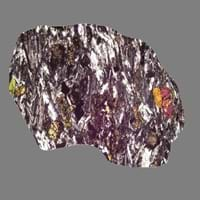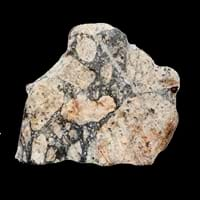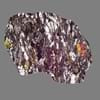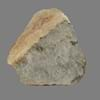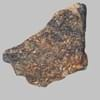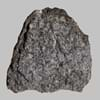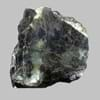Definition
Trachyte is a grey fine-grained volcanic rock which mainly consists of alkali feldspar
Breccia is a rock consisting of angular fragments of stones which are cemented by finer calcareous material
Discoverer
Alexandre Brongniart and René Just Haüy
Unknown
Etymology
From Greek trakhus rough’ or trakhutēs roughness
From Italian, literally gravel, Germanic origin and related to break
Class
Igneous Rocks
Sedimentary Rocks
Sub-Class
Durable Rock, Medium Hardness Rock
Durable Rock, Hard Rock
Group
Volcanic
Not Applicable
Other Categories
Fine Grained Rock, Opaque Rock
Coarse Grained Rock, Medium Grained Rock, Opaque Rock
Texture
Aphanitic to Porphyritic
Brecciated, Clastic
Color
Black, Brown, Dark Greenish - Grey, Green, Grey, Light to Dark Grey, White
Beige, Black, Blue, Brown, Buff, Green, Grey, Orange, Pink, Purple, Red, Rust, White, Yellow
Durability
Durable
Durable
Scratch Resistant
Yes
Yes
Appearance
Banded
Layered, Banded, Veined and Shiny
Interior Uses
Decorative Aggregates, Flooring, Homes, Interior Decoration
Countertops, Decorative Aggregates, Entryways, Floor Tiles, Flooring, Homes, Hotels, Interior Decoration
Exterior Uses
As Building Stone, As Facing Stone, Paving Stone, Garden Decoration, Office Buildings
As Building Stone, As Facing Stone, Paving Stone, Garden Decoration, Office Buildings
Other Architectural Uses
Curbing
Curbing
Construction Industry
As Dimension Stone, Building houses or walls, Cement Manufacture, Construction Aggregate, for Road Aggregate, Landscaping, Making natural cement, Manufacture of Magnesium and Dolomite Refractories
As Dimension Stone, Construction Aggregate, Landscaping, Roadstone
Medical Industry
Not Yet Used
Not Yet Used
Antiquity Uses
Artifacts, Monuments, Sculpture, Small Figurines
Artifacts, Sculpture
Commercial Uses
Cemetery Markers, Creating Artwork
Creating Artwork, Gemstone, Jewelry
Types
Not Available
Collapse Breccia, Fault Breccia, Flow Breccia, Pyroclastic Breccia, Igneous Breccia and Impact Breccia
Features
Available in Lots of Colors and Patterns, Is one of the oldest rock, Matrix variable
Available in Lots of Colors and Patterns, Clasts are smooth to touch
Archaeological Significance
Monuments
Used
Not Yet Used
Famous Monuments
Data Not Available
Not Applicable
Famous Sculptures
Data Not Available
Data Not Available
Pictographs
Used
Not Used
Petroglyphs
Used
Not Used
Formation
Trachyte is an igneous volcanic rock with an aphanitic to porphyritic texture. It is the volcanic equivalent of syenite rock and forms as a result of magmatic differentiation.
Breccia is a clastic sedimentary rock which is composed of broken fragments of minerals or rock which are cemented together by a fine-grained matrix and it forms where broken, angular fragments of rock or mineral debris accumulate.
Mineral Content
Augite, Biotite, Feldspar, Hornblade, Plagioclase, Quartz
Calcite, Clay, Feldspar, Phosphates, Quartz, Silica
Compound Content
Potassium Oxide, Sodium Oxide, Silicon Dioxide
Aluminium Oxide, Ca, NaCl, CaO, Iron(III) Oxide, Potassium Oxide, Sodium Oxide, Silicon Dioxide, Titanium Dioxide
Types of Metamorphism
Cataclastic Metamorphism, Contact Metamorphism, Regional Metamorphism
Burial Metamorphism, Cataclastic Metamorphism
Types of Weathering
Biological Weathering, Chemical Weathering, Mechanical Weathering
Biological Weathering, Chemical Weathering, Mechanical Weathering
Types of Erosion
Chemical Erosion, Coastal Erosion, Glacier Erosion, Sea Erosion, Water Erosion, Wind Erosion
Chemical Erosion
Grain Size
Fine Grained
Medium to Coarse Grained
Fracture
Not Available
Uneven
Porosity
Less Porous
Less Porous
Luster
Metallic
Dull to Pearly
Compressive Strength
Not Available
Cleavage
Not Available
Non-Existent
Toughness
Not Available
Not Available
Specific Gravity
2.7
2.86-2.87
Transparency
Opaque
Opaque
Density
2.43-2.45 g/cm3
0 g/cm3
Resistance
Heat Resistant, Impact Resistant, Wear Resistant
Heat Resistant, Impact Resistant, Pressure Resistant, Wear Resistant
Deposits in Eastern Continents
Asia
China, India, Iran, Saudi Arabia, Sri Lanka, Taiwan, Thailand, Turkey, Vietnam
China, India, Kazakhstan, Mongolia, Russia, South Korea, Uzbekistan
Africa
Angola, Egypt, Madagascar, Namibia, Nigeria, South Africa
Namibia, Nigeria, South Africa
Europe
Bulgaria, England, Germany, Norway, Romania, Switzerland
Austria, Denmark, Germany, Great Britain, Netherlands, Norway, Poland, Sweden, Switzerland, United Kingdom
Others
Not Yet Found
Greenland
Deposits in Western Continents
North America
USA
Barbados, Canada, Mexico, Panama, USA
South America
Brazil, Chile
Brazil
Deposits in Oceania Continent
Australia
New Zealand, Queensland, South Australia, Western Australia
New South Wales, New Zealand
All about Trachyte and Breccia Properties
Know all about Trachyte and Breccia properties here. All properties of rocks are important as they define the type of rock and its application. Trachyte belongs to Igneous Rocks while Breccia belongs to Sedimentary Rocks.Texture of Trachyte is Aphanitic to Porphyritic whereas that of Breccia is Brecciated, Clastic. Trachyte appears Banded and Breccia appears Layered, Banded, Veined and Shiny. The luster of Trachyte is metallic while that of Breccia is dull to pearly. Trachyte is available in black, brown, dark greenish - grey, green, grey, light to dark grey, white colors whereas Breccia is available in beige, black, blue, brown, buff, green, grey, orange, pink, purple, red, rust, white, yellow colors. The commercial uses of Trachyte are cemetery markers, creating artwork and that of Breccia are creating artwork, gemstone, jewelry.
